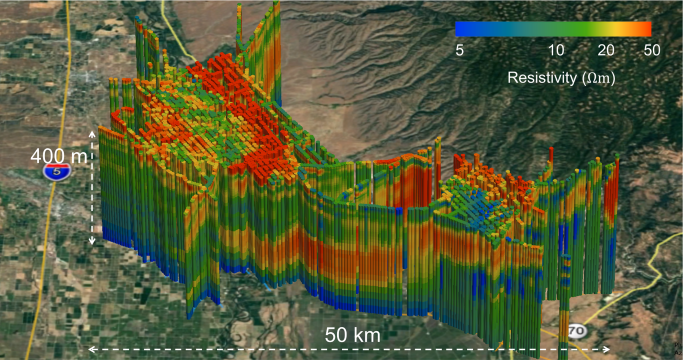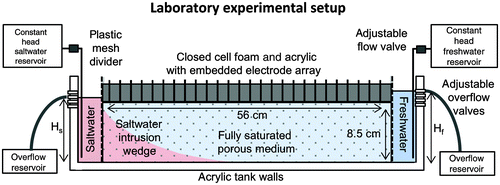The effect of power lines on time-domain airborne electromagnetic data
Info
- Journal: Geophysics
- doi: 10.1190/geo2020-0089.1
Plane language summary
The powerline effect is the major noise source contaminating the airborne electromagnetic (AEM) data, which provides a great mapping capability to image the subsurface hydrogeology. In this paper, we developed a simulation approach to understand the powerline effect in the AEM data. Working with the acquired AEM data in Butte and Glenn Counties, California, U.S.A, we exmained the powerline effect and identified a sinificant powerline effect in the field AEM data around water wells. We also found that due to the degradation of the groundings at the base of the powerline poles, it is common to identify negligible powerline effect in spite of the presence of the powerlines proximate to the locations of the AEM data.
Abstract
The acquisition of airborne electromagnetic (AEM) data colocated with water well data provides an essential data set for constructing an accurate rock-physics relationship between resistivity from AEM and lithology from wells. Results from an AEM survey in Butte and Glenn Counties, California, USA, where 41 water wells are located within 100 m of the AEM flight lines, provide a unique opportunity to investigate the effect of water wells on AEM data. Based on systematic numerical analyses and examination of the field data, we find that the only noise source related to the wells that affects the AEM signals in our study area is the power lines; the effect of the steel casings in the study area is negligible. Our numerical simulations yield two important findings: (1) the effect of the power line is mainly dependent upon the resistivity of the ground pathway between the base of the power-line poles, and (2) for the resistivity structure in the study area, when the ground contact resistance is sufficiently low, the effect of the power line will be observed in the AEM data until there is a separation distance of 174 m from the power line; the total power-line percentage effect less than 3% has been considered to be negligible. However, we find that, in the field data, an average separation distance between the power line and high-quality AEM data (i.e., no impact from the power lines) is only 60% of this predicted distance. We attribute this to the high ground contact resistance caused by degradation of the grounded electrodes located at the bottom of the power-line poles. For our 41 wells, after removing any soundings contaminated by power-line noise, we are left with high-quality soundings located 0-160 m from the water wells, with an average distance of 77 m.
Citation
Seogi Kang, Noah Dewar, and Rosemary Knight, (2021), The effect of power lines on time-domain airborne electromagnetic data, GEOPHYSICS 86: E123-E141. doi: 10.1190/geo2020-0089.1



